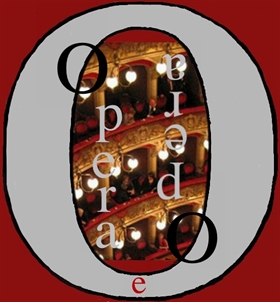By Dalila Calisolo —
The National Gallery of Art in Washington D.C. is teaming up in this novembre 2015 with Capital Weather Gang to analyze and understand different types of Weather depicted in works of art. We show only a small part of this very interesting analysis, still under way.
Often we look to the clouds to understand the weather, so they begin by examining a variety of cloud studies done by artists in the 18th- and 19th-centuries.
Start by looking at John Constable’s “Cloud Study: Stormy Sunset.”

Among early 19th-century artists, John Constable was one of the most assiduous and systematic students of the sky. As a landscape painter he was acutely aware of the sky as the principal source of light and of the extent to which cloud cover, the formations of clouds, and atmospheric effects could influence the appearances of nature. The artist felt that a thorough understanding of such natural phenomena would give his art greater truth to nature.
Capital Weather Gang: “John Constable’s “Cloud Study: Stormy Sunset” features something very interesting.
In addition to the silver lining of the low cumulus clouds, the bottom of the painting illustrates crepuscular rays. These are the rays of sunshine that poke down through the clouds that look like light from the heavens. You can tell Constable intended to portray these because of his straight brush strokes that fan out from the main source of light.”
Now take a close look at Jean-Honoré Fragonard’s “Mountain Landscape at Sunset”. Both Fragonard and Constable are depicting the same moment in time, but they are doing it in dramatically different ways.

Capital Weather Gang: “Mountain Landscape at Sunset” by Jean-Honoré Fragonard reminds us of some beautiful sunsets here in Washington, D.C., this summer.
The grey clouds are cumulus and they’re very low in the sky. They provide an interesting, dark foreground to the orange sunset happening behind them. The orange color is probably sunlight being reflected off very high clouds. We think the best sunsets happen when there are many layers of clouds for the sun to play off.”
The National Gallery of Art continues the study of Weather and clouds with two works of art by Gustave Courbet, the great 19th-century French master.
Above all, Courbet was a painter of landscapes, and is best known for depicting the rocky outcroppings, steep canyons, and flowing rivers of the dramatic topography of eastern France. He was mesmerized by the beaches of Normandy and the mercurial weather and light of their coastal setting. He completed an inspired series of marine paintings, stark in their reduced compositions and unique in their exuberant surfaces.
Let your eyes wander over “The Black Rocks at Trouville.”

With its expressive range and quality of color, it is an extraordinary example from Courbet’s marine series. The sunset sky is sculpted by a variety of brushes as well as by his famous palette knife, atop a dark ground that breaks through to the surface. A strip of turquoise marks the horizon, and several rocks and a swath of wet sand shaped by smears of the knife define the foreground.
Capital Weather Gang: “The great 19th-century French master Gustave Courbet is best known for his landscapes. “The Black Rocks at Trouville” is awash with red — a deep, stunning sunset by the sea.
We’re enamored by the stormy-looking skies, like a line of thunderstorms just passed through and the skies are starting to clear out with hints of blue.

The clouds in “Calm Sea” look like low and mid-level cumulus. They might be bubbling up along a sea breeze, where winds converge along the shore.
Capital Weather Gang: “Calm Sea” is a truly tranquil painting, and you can tell the winds were very calm that day. Even the smallest of breezes is usually enough to rustle up some bigger waves. The sand looks like it’s wet near the shore — like the tide just went out.
The clouds in “Calm Sea” look like low and mid-level cumulus. They might be bubbling up along a sea breeze, where winds converge along the shore.”
This is only a part of the interesting analysis: it continues in one week. We are pleased to show some results.
Dalila Calisolo
SOURCE AND PHOTOS: National Gallery of Art in Washington D.C. and Capital Weather Gang

